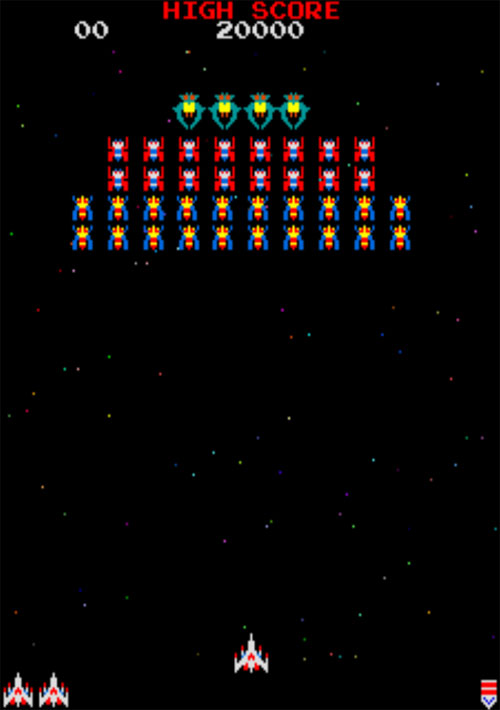
My earliest memory of playing a video game is of standing on a puke-red plastic chair to reach the controls of a “Galaga” machine. “Galaga” was originally released in 1981, so I would have been at least five years old at the time, which feels just about right to me. This would have been long before I owned an Atari 2600, and was probably before I had even played any of “Galaga's” predecessors, like “Gorf” or “Space Invaders.” For me, this was the ur gaming experience and probably explains why I'm still in love with the game twenty-five years later.
Not only that, but it goes a long way to explaining my belief that the best video games are also the most zen-like. With the release of the Nintendo Wii and, before that, the explosion of on-line collaborative and competitive gaming, it's obvious that there is a huge demand for various modes of head-to-head gaming. Games where two or more people are directly connected in one gaming space. “Party” games. I look forward to all that the Wii has to offer, but my roots, and I expect the roots of many other gamers over twenty-five or so years, are firmly planted in single player versus a relentless army of space aliens firmament. I've personally never seen the appeal of MMORPGs or on-line FPSs. I've felt the total opposite in fact. The idea of having to travel around a world with a horde of l337 speaking twelve year olds is the furthest thing from enjoyment I can think of.
When you play a single player shooter (or any other single player game for that matter, but mostly shooters) it's just you versus the game. Look a little deeper and you'll see that it's really you versus yourself. It's not a question of whether or not you can defeat the never-ending rush of space mutants, it's whether or not you can beat your best score, or surpass the previous stage. It's finding the ability to focus all of your attention on a single simple task: stay alive just a little longer, shoot just a little straighter, fly just a little tighter. Eventually the world fades out around you and you don't even need to think about what you are reacting to. The game seems to be playing itself.
This feeling of losing control is what some athletes call “the zone.” All of the variables fall away and everything just happens. It's as if you are just a fraction of a second in the future and are able to react just before the critical moment. In a way, the standard arcade cabinet is a sort of physical realization of this feeling. It's like putting on blinders so that all you can see and hear is coming directly from the screen. A similar experience may be evoked from RPGs after extended periods of play. The player may lose themselves in the game world for hours at a time without realizing it. It is at these points of heightened play that I feel a game reaches its zenith. The player is made to lose all physical attachments and is functioning on a purely mental level, minus a few electrical pulses to twitch at the controller. It may be easy to look at this outward closing off and shutting down as a brain-dead, zombie-like state, but this is actually where the brain clicks into high gear, moving in several directions at once. We have moved into a true virtual reality devoid of the body.
Of course, in reality, we are still limited by our physical body and the physical limitation of the gaming hardware. “Galaga” is as much about smashing the button and jerking the joystick as it is going down the rabbit-hole of the mind. One has to build some sharp hand/eye skills as well as a memory of the various flight patterns of the enemy ships, just like every other “Invaders”-like clone. Where “Galaga” succeeded for me was in its unique (at the time, at least) variations of game play.
“Galaga” is about as standard a shooter as a shooter can get. What makes it a step above many others is the presentation. The bug-like enemies are almost cute, undeniably colorful and animated just enough to breathe a little life into them.
The bugs fly onto the screen in formation, one section at a time. There are only three types of bugs; the wimpy red guys, the elite blue squad, and the big green guys at the top.
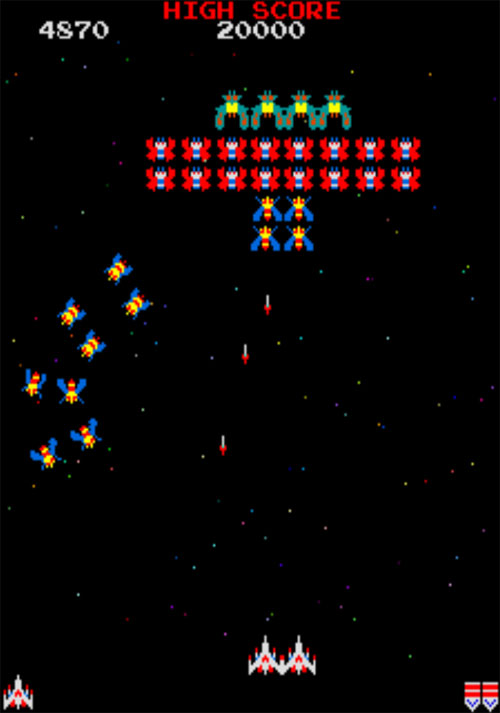
You are able to blast them as they fly in. If you're quick and accurate enough you may even be able to clear them all before they are able to form up in their rows. This is what the kids call “PWNING” the wave.
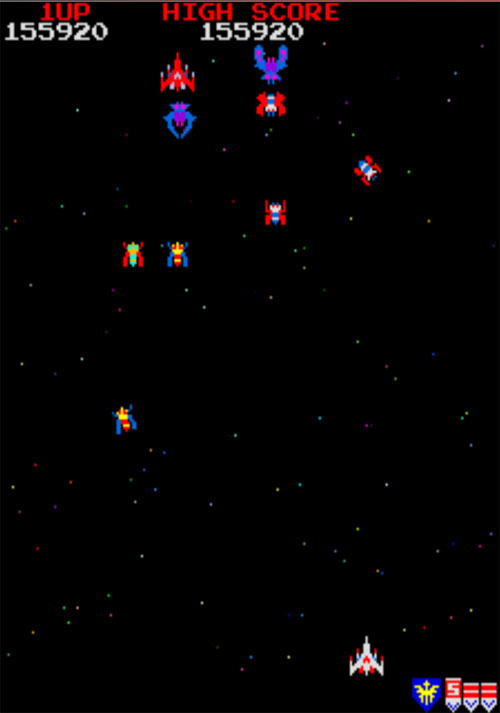
The blue guys also have a trick up their sleeves (assuming they have sleeves.) They are able to morph and separate into three super secret fighters.
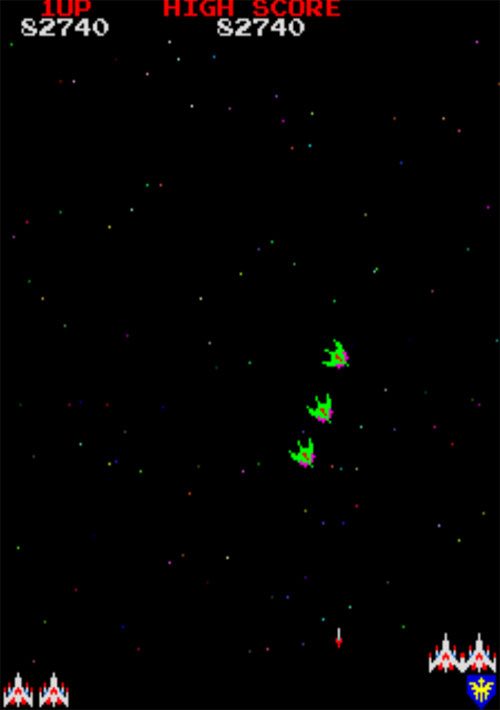
There are a few different types of fighters that they’ll change into depending on what stage you’re on. Each group is tougher and cooler looking the further you advance.
Another special attack comes from the green guys. If there are at least two of them on the screen, one will send out a tractor beam.
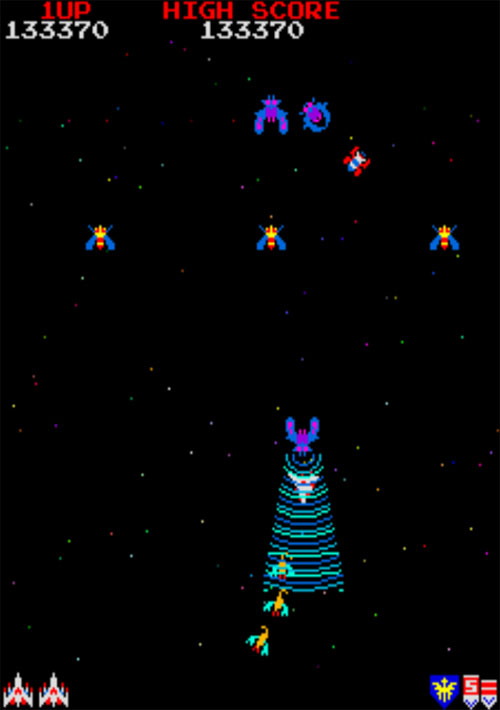
If you steer your ship into the beam, your ship will be spun around and lifted onto the back of the ship.
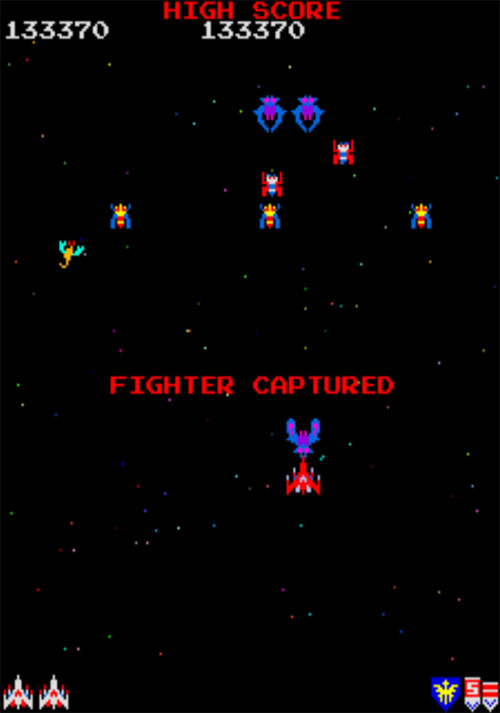
He will then fly back up to his place at the top of the formation.
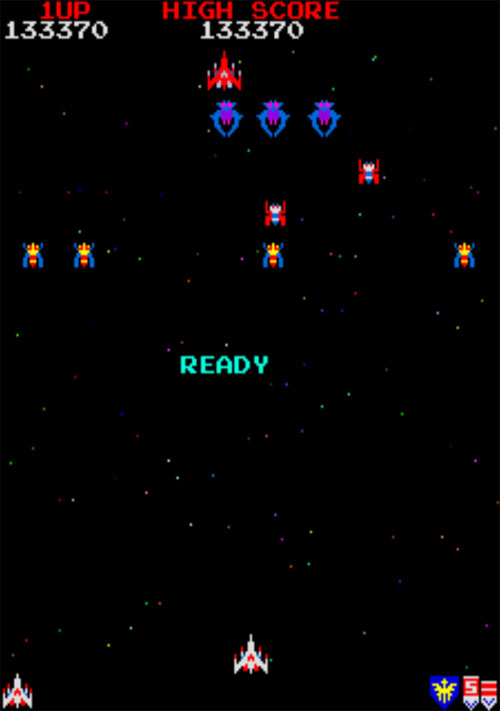
When he makes his next bombing run, you’ll have a chance to blast him and reclaim your stolen ship and achieve the much sought after twin fighter!
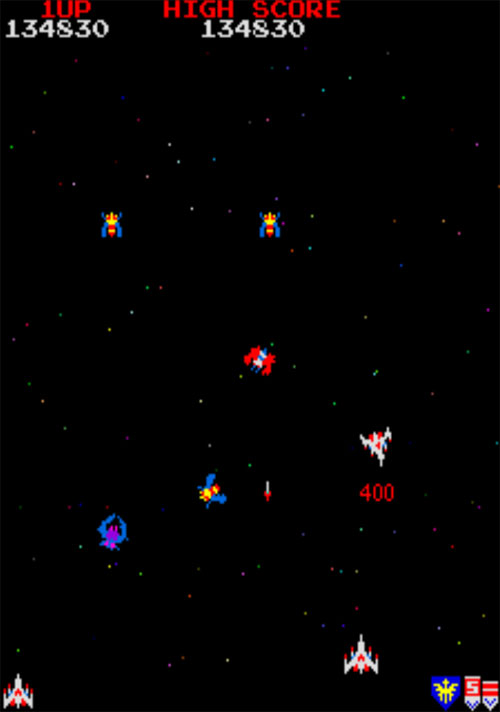
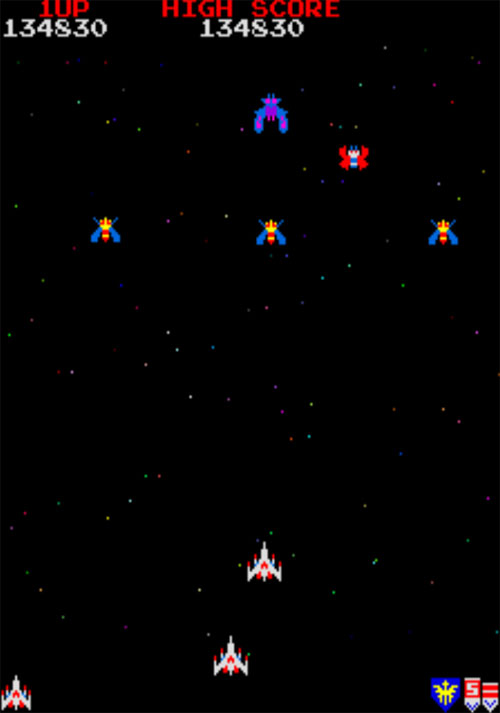
Having the twin fighter is an absolutely essential part to mastering “Galaga,” and you’re able to achieve it on the very first stage. I should probably point out (for you slower learners) that you want to make sure you have at least one extra fighter in reserve before flying into the tractor beam, otherwise it’s “Game Over” man. Game. Over.
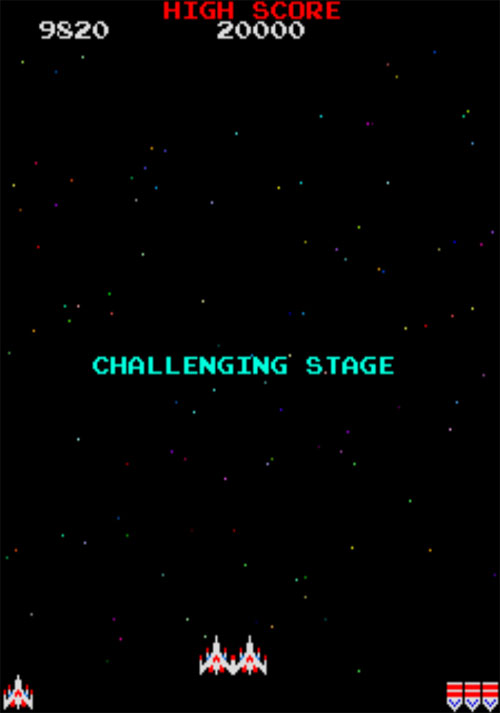
Another of the more original aspects of the game is the “Challenging Stage.” These stages pop in between the regular stages every so often. It is here that we separate the true “Galaga” men from the “Galaga” boys. Ships will zoom across the screen in small numbers, and it’s up to you to blast each one before it zooms off of the screen. The only way to achieve a perfect score is to have the position of each wave memorized so you can move to the right spot before they appear. If you manage to get all forty, you’re treated to a special fanfare and the “Perfect!” message.

The girls will be all over you when they see that!
When you’ve finally exhausted your supply of reserve ships, you’ll be given a ranking based on your hit/miss ratio.
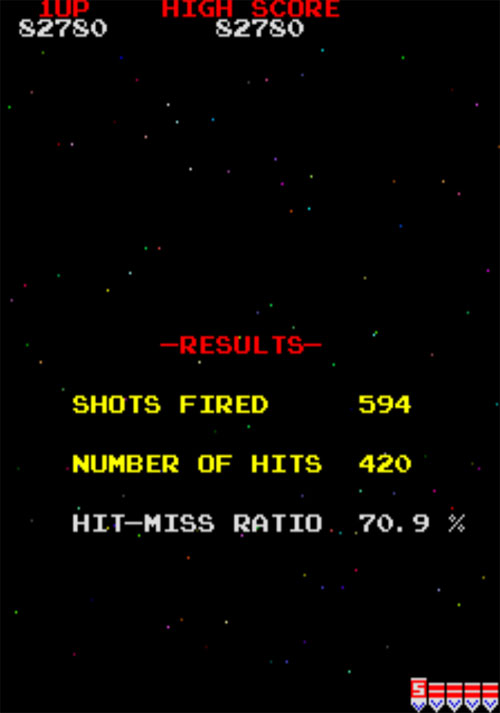
Yes! Grade me! Grade me!
That’s it, really. Like I said, “Galaga” is simple, but like many simple and essentially un-win-able games it is also totally addictive. The only true competition here is yourself and your previous achievements. Good luck!
---
You can get an mp3 of all the songs and sounds that have haunted my dreams for 25 years right here.
0 comments:
Post a Comment